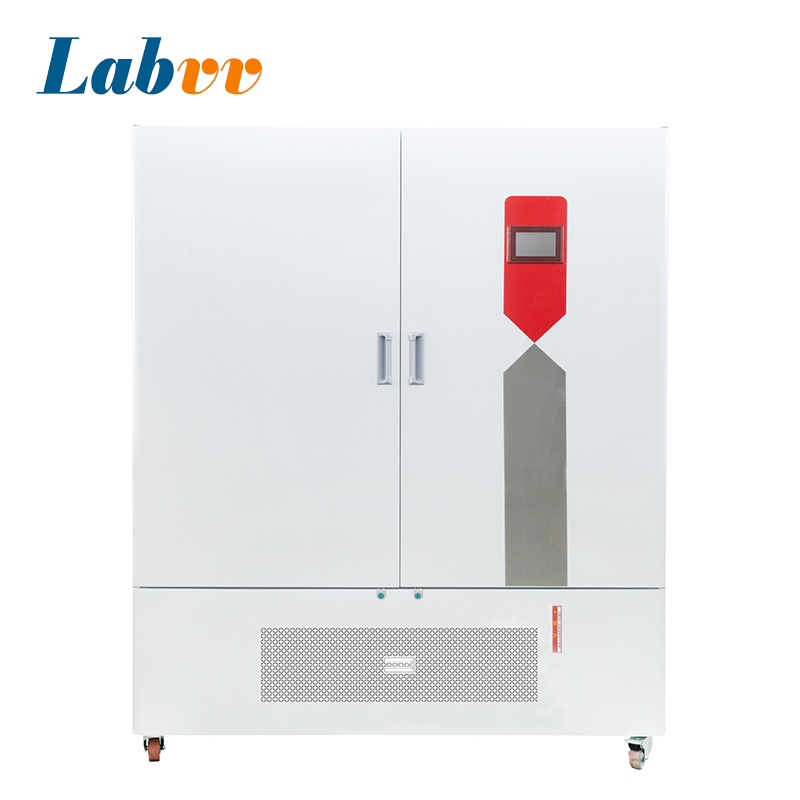Types of Incubators: A Complete Guide to Common Laboratory Incubators
Types of incubators used in laboratories vary widely depending on the biological materials being cultured and the environmental conditions required. Each type of incubator is designed to simulate a specific growth environment—temperature, humidity, CO₂ levels, oxygen concentration, and even light—to support the cultivation of cells, tissues, microorganisms, plants, and more.
This article provides a comprehensive overview of the main types of incubators, their features, and their typical applications, helping laboratories select the right equipment for their research needs.
1. Constant Temperature Incubators
Constant temperature incubators are the most basic type and are widely used for general bacterial culture and closed-cell culture.
Key Features
- Heating control only (no cooling system)
- Simple structure, stable performance
Subtypes
- Water-Jacketed Incubators: Heat is transferred through water circulation, providing excellent temperature uniformity and stability.
- Electric Heating Incubators: Use electric heating tubes; easier to operate but tend to have weaker temperature uniformity.
Common Uses
- Routine bacterial culture
- Pre-warming culture media, reagents, and equipment
2. Constant Temperature and Humidity Incubators
Among all types of incubators, this category is important for experiments requiring stable humidity in addition to temperature control.
Key Features
- Precise temperature and humidity control
- Usually built without an observation window to reduce heat loss
Applications
- Plant cultivation
- Fermentation experiments
- Microbial culture
- Storage of blood serum, medicines, and culture media

3. Biochemical Incubators
Biochemical incubators offer both heating and cooling, making them flexible for year-round use.
Key Features
- Dual heating and refrigeration system
- Typically include an observation window
- Do not include humidity control or sterilization functions
Applications
- Environmental studies
- Microbiology experiments
- Low-temperature culture
- Routine lab temperature-controlled tests

4. Mold Incubators
This type of incubator is designed specifically for fungi and mold cultivation, which requires stable temperature and relatively high humidity.
Key Features
- Heating and cooling
- Integrated humidity control
- Optional programmable temperature–humidity cycles
Applications
- Fungal research
- Agricultural and environmental testing
- BOD testing
- Microbial culture and preservation
5. CO₂ Incubators
One of the most critical types of incubators in cell biology is the CO₂ incubator. It recreates an in-vivo–like environment for mammalian cell culture.
Key Features
- Precise temperature (usually 37°C)
- 5% CO₂ concentration control
- High humidity (95%)
- pH stability for cell culture medium
- Optional high-temperature sterilization
Applications
- Mammalian cell culture
- IVF and stem cell research
- Tissue engineering
- Hybridoma technology
- Drug screening and toxicity studies

6. Anaerobic Incubators
Also known as anaerobic workstations, these incubators maintain oxygen-free conditions for culturing strict anaerobic bacteria.
Key Features
- Oxygen-free working chamber
- Temperature control
- Integrated gloves for direct sample manipulation
Applications
- Anaerobic bacteria culture
- Medical microbiology
- Environmental anaerobic studies
7. Artificial Climate Chambers
These chambers simulate multiple environmental factors simultaneously and therefore represent some of the most complex types of incubators.
Key Features
- Light control
- Temperature control (heating & cooling)
- Humidity regulation
- Atmospheric pressure and gas composition control
Applications
- Seed germination
- Plant growth and breeding
- Environmental simulation tests
- Small animal and insect rearing
8. Illuminated (Light) Incubators
Light incubators are used when samples require both stable temperature and controlled illumination.
Key Features
- Adjustable light intensity and photoperiod
- Cooling and heating system
- High temperature uniformity
Applications
- Plant tissue culture
- Microbial culture that requires light
- Photobiology research
9. Plant Growth Incubators
A specialized category within the types of incubators, plant growth incubators combine temperature, humidity, and controlled lighting to support plant development.
Key Features
- Light, humidity, and temperature control
- Programmable light cycles
- Designed specifically for plant physiology experiments
Applications
- Plant growth and breeding
- Botany and forestry research
- Controlled-environment agriculture studies
10. Low-Temperature Incubators
Low-temperature incubators are designed for applications requiring temperatures below freezing and even ultra-low temperatures.
Key Features
- Can reach temperatures as low as –150°C
- Stable low-temperature environment
Applications
- Storage of biological reagents
- Microbial culture preservation
- Environmental testing
Conclusion
Understanding the different types of incubators is essential for selecting the right equipment for your laboratory. Each incubator type offers unique environmental controls tailored to specific experimental needs—from basic bacterial cultures to highly sensitive mammalian cell growth or plant development.
Choosing the correct incubator not only improves experiment success rates but also enhances repeatability, safety, and efficiency in laboratory workflows.
For high-quality, reliable laboratory incubators, visit Labvv today. Explore our range of top-tier incubators and laboratory equipment designed to support your research and experiments. Contact us or Whatsapp Us for expert advice on selecting the right incubator for your lab!
Related Topics You May Be Interested In:
- What Is a Clinical Diagnostics Laboratory System and How Does It Work?
Learn about the components and functions of clinical diagnostics laboratory systems and how they support medical testing. - How to Choose a Clinical Diagnostics System for Your Laboratory
Choosing the right clinical diagnostics system for your lab? Get expert tips on selecting the ideal system for your needs. - Incubator Uses in Laboratory: Functions, Benefits, and Common Applications
Understand the diverse functions and applications of incubators in laboratory settings, and how they benefit your research. - Laboratory Incubator vs CO₂ Incubator: What’s the Difference?
Explore the key differences between laboratory incubators and CO₂ incubators, and learn which is best for your research. - Incubator in Laboratory: Definition, Types, and How It Works
Get an in-depth understanding of incubators in laboratories, including types, functions, and their role in research. - In-Depth Guide to CO₂ Incubators: Principles, Applications, and Smart Buying Tips
A comprehensive guide on CO₂ incubators, including their principles, applications, and tips for making the right purchase. - Applications of CO₂ Incubators in Biological Research
Learn how CO₂ incubators are applied in biological research, from cell culture to other critical applications. - CO₂ Incubator for Cell Culture: Supporting Cellular Mechanism Research
Discover the importance of CO₂ incubators in cell culture research and their role in supporting cellular mechanism studies.
